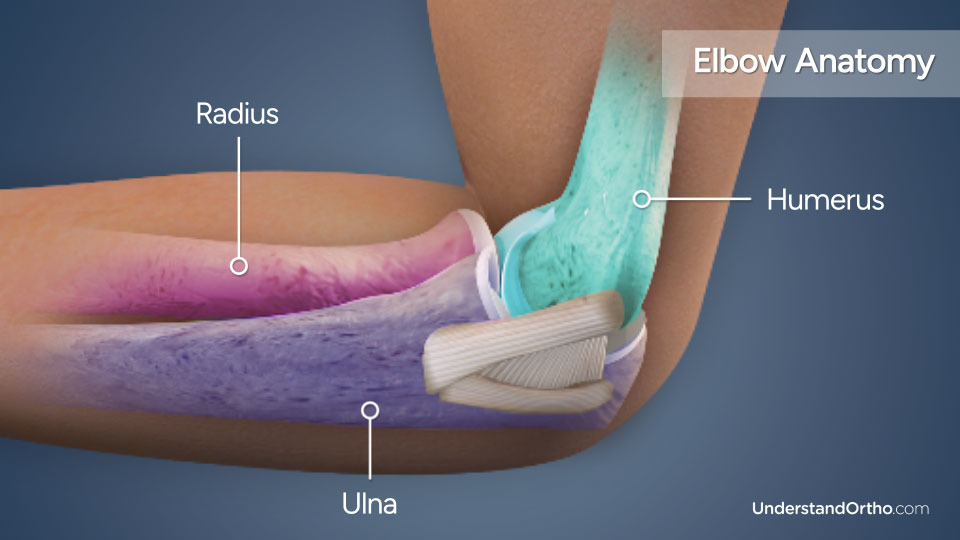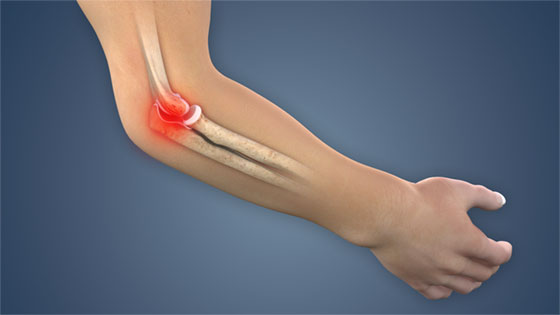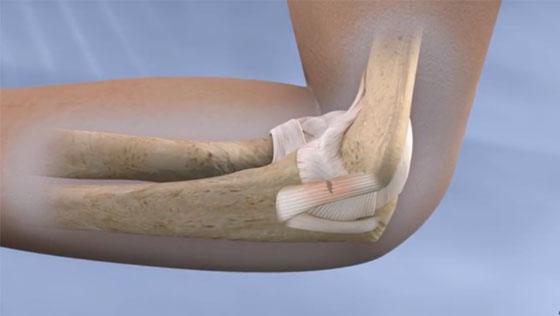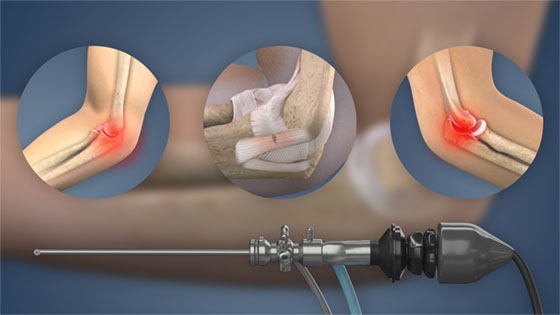What is Golfer’s Elbow?
Golfer’s elbow (also known as baseball elbow or medial epicondylitis) is a painful condition caused by swelling or tearing of the tendons that connect the muscles of the forearm to the inside of the elbow. In contrast, tennis elbow affects the tendons on the outside of the elbow.
Key statistics about Golfer’s Elbow
- Golfer’s elbow affects more women than men[1]
- Golfer’s elbow occurs in the dominant arm 75% of the time[2]
- Golfer’s elbow most commonly occurs in individuals between 40 and 60 years old[1]
- 90% of incidences of golfer’s elbow are not sports-related[2]
- 80% of individuals who suffer from golfer’s elbow recover without surgical intervention within 1 to 3 years[1]
Expert Insight
Understanding Tennis & Golfer's Elbow - Jason Klein, MD
Elbow Anatomy
The elbow joint is formed by three bones: the humerus, the ulna, and the radius.
Tendons connect muscles to other bones. Epicondyles are protrusions on the ends of bones where tendons connect the bone to muscle.
The medial epicondyle is on the inside (medial) of the elbow and is where the medial common flexor tendon attaches the flexor and pronator muscles to the humerus. The medial common flexor tendon is the tendon most commonly involved in golfer’s elbow.

What is the cause of Golfer’s Elbow?
Golfer’s elbow is most commonly the result of overuse and repetitive movement. This repetitive movement causes strain to the flexor and pronator muscles of the forearm, resulting in inflammation and tearing of the medial common flexor tendon. Activities that increase the risk of golfer’s elbow include:
- Golfing or engaging in other throwing sports such as baseball
- Carrying heavy luggage
- Chopping with an ax
- Use of tools that flex the wrist
What are the symptoms of Golfer’s Elbow?
The symptoms of golfer’s elbow commonly include:
- Pain radiating from the inside of the elbow to the forearm and wrist
- Weakness
- Tingling
- Loss of elbow mobility
How is Golfer’s Elbow treated?
Most individuals who suffer from golfer’s elbow can successfully resolve symptoms through nonsurgical techniques such as:
- Rest and ceasing the movement or activity that lead to the condition
- Ice and use of anti-inflammatory medication to reduce inflammation
- Physical therapy and strengthening exercises
- Bracing the affected arm
- Steroid injections
In rare cases, surgical intervention may be necessary to address golfer’s elbow symptoms that cannot be treated with nonsurgical measures. Surgery for golfer’s elbow most commonly involves removing the damaged portion of the tendon and repairing and reattaching it to the bone.
Find an Orthopedic Doctor in Your Area





